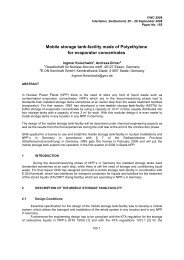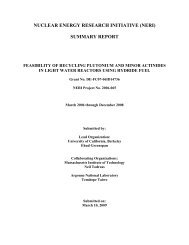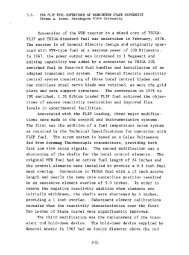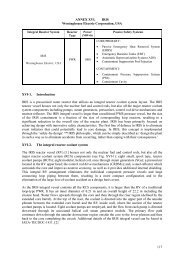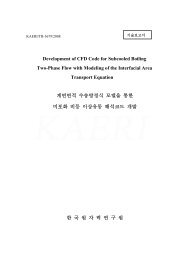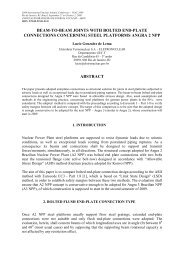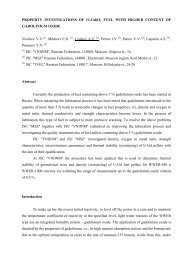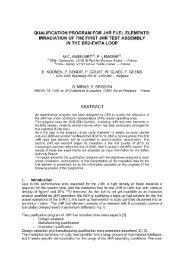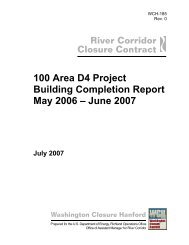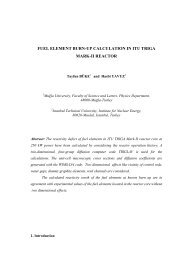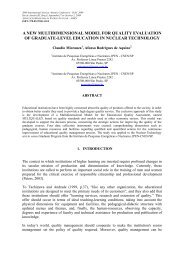transient calculations of coolant mixing in vver-440/213 rpv
transient calculations of coolant mixing in vver-440/213 rpv
transient calculations of coolant mixing in vver-440/213 rpv
You also want an ePaper? Increase the reach of your titles
YUMPU automatically turns print PDFs into web optimized ePapers that Google loves.
The streaml<strong>in</strong>es show the flow path <strong>of</strong> the <strong>coolant</strong> through HA <strong>in</strong> the RPV. The water goes down<br />
directly <strong>in</strong>to the core and does not mix with the warmer water <strong>in</strong> the upper plenum.<br />
Fig. 9: Streaml<strong>in</strong>es <strong>in</strong> the pressure vessel<br />
SUMMARY<br />
In this paper the results <strong>of</strong> three <strong>transient</strong> simulations were presented, performed <strong>in</strong> the Budapest<br />
University <strong>of</strong> Technology and Economics, Institute <strong>of</strong> Nuclear Techniques (BME NTI). Due to<br />
the development <strong>of</strong> the available computational capability, it is already achievable to <strong>in</strong>clude the<br />
direct model <strong>of</strong> all <strong>in</strong>ternals <strong>in</strong> the CFD model <strong>of</strong> the pressure vessel. It opens the door to perform<br />
detailed simulations for different <strong>transient</strong> cases.<br />
Three different <strong>transient</strong> events were computed with the model. The performed simulations<br />
showed that the model is applicable for the computation <strong>of</strong> different cases.<br />
The first <strong>transient</strong> was the start up <strong>of</strong> the 6 th ma<strong>in</strong> <strong>coolant</strong> pump. The temperature distribution is<br />
very <strong>in</strong>homogeneous on the wall <strong>of</strong> the RPV at the beg<strong>in</strong>n<strong>in</strong>g <strong>of</strong> the <strong>transient</strong>.<br />
The second <strong>transient</strong> was the <strong>in</strong>jection from the ECS <strong>in</strong>to 2 nd , 3 rd and 5 th cold loops. The mass<br />
flow <strong>of</strong> the cold water was negligible compared to the mass flow <strong>of</strong> the loops so it did not have<br />
large <strong>in</strong>fluence.<br />
The third ones was the <strong>in</strong>jection from ECS <strong>in</strong>to the 4 th loop and through the nozzles <strong>of</strong> HA above<br />
the core.. The colder water fills the 4 th loop and flows <strong>in</strong>to the RPV. The <strong>coolant</strong> from HA flows<br />
down <strong>in</strong>to the core and starts to cool down the fuel assemblies.



